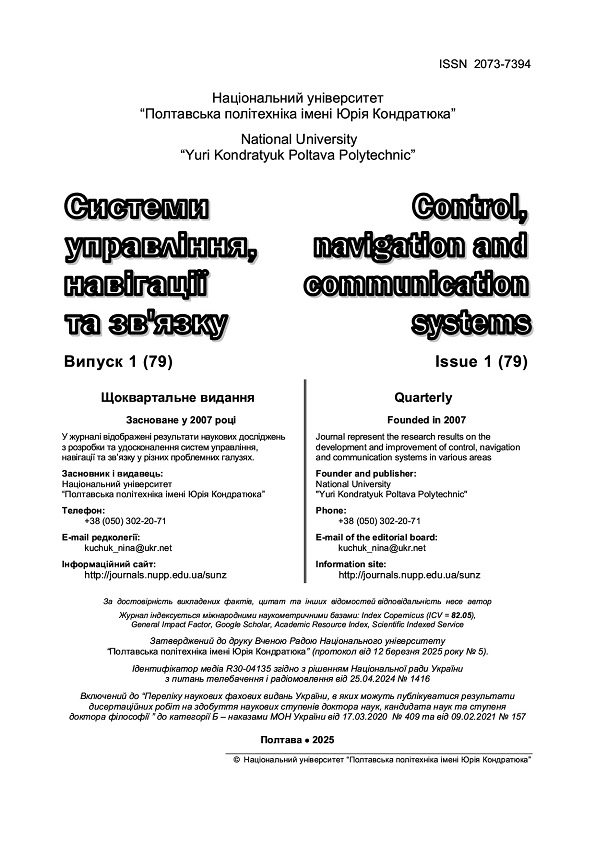Modeling of the traction electric drive of a diesel train taking into account the use of a rubber-cord coupling during wheelset slippage
DOI:
https://doi.org/10.26906/SUNZ.2025.1.23-30Keywords:
computer components, modeling of slippage processes, AC electric drive, diesel train, control systems, slippage, elastic connections, rubber-cord coupling, adequacy, slip frequency, process graphs, tables, control signalsAbstract
The issues of development and research of models for the AC electric drive of a diesel train are considered. A review of literary sources on the specified topic and an analysis of existing approaches to solving problems related to the development of control systems that ensure increased efficiency of the electric drive under operating conditions, including possible wheelset slippage, are conducted. Both generally accepted approaches to studying the processes of wheelset slippage through modeling and proposed approaches are examined. Computer components of the electromechanical system of the diesel train have been developed, taking into account elastic connections under the condition of ensuring quality indicators of the control system in its elements during slippage, as well as a model describing the possible slippage process. The presented models can be used to study the automatic regulation system of the electric transmission and to clarify its parameters, as well as to determine the parameters of the rubber-cord coupling (RCC) and subsequently implement them in the form of corresponding computer components of the diesel train control system. The proposed model has been investigated both in terms of its adequacy and its applicability for the development of a control system that ensures the efficiency of the electric drive with RCC during slippage. The research results are presented in the form of graphs of processes of characteristic phase variables and tables containing numerical values of characteristic variables of the control system depending on control signals.
Downloads
References
1. Walrave, Ellwanger G. Hochgeschwindigkeitsverkehr in Europa // ETR – Eisenbahntechnische Rundschau. – 1995. – №10. – P. 136 – 142.
2. Shabana, A. A., Zaazaa, K. E., & Sugiyama, H. (2017). Railway Vehicle Dynamics: A Computational Approach. CRC Press. Amazon.
3. Iwnicki, S. (Ed.). (2006). Handbook of Railway Vehicle Dynamics. CRC Press. CRC Press. DOI: https://doi.org/10.1201/9781420004892
4. Olofsson, U., & Lewis, R. (2006). Adhesion in the Wheel-Rail Contact. Proceedings of the Institution of Mechanical Engineers, Part F: Journal of Rail and Rapid Transit, 220(4), 437–446. ResearchGate. 1. 5 Spiryagin, M., Cole, C., & Sun, Y. (2014). Factors Affecting Wheel-Rail Adhesion. Wear, 314(1-2), 124–129. ScienceDirect.
5. Поповіч М.Г. Електромеханічні системи автоматичного керування та електроприводи: Навч. посібник / М.Г. Поповіч, О.Ю. Лозинський. – К.: Либідь, 2005. – 680 с.
6. Толочко, О.І. Моделювання електромеханічних систем. Математичне моделювання систем асинхронного електроприводу: навчальний посібник / О.І. Толочко. – Київ, НТУУ «КПІ», 2016. – 150 с.
7. Заполовський М.Й. Синтез управлінь для оптимізації динамічних процесів електроприводу змінного струму / М.Й. Заполовський, В.В. Скородєлов, М.В. Мезенцев // Системи управління, навігації та зв’язку. – Вип. 4(50). Полтава. 2018. С. 38 – 41. DOI: https://doi.org/10.26906/SUNZ.2018.4.038
8. М.Й. Заполовський, М.В. Мезенцев, В.В. Скородєлов. Математична модель для синтеза управлінь електроприводом змінного струму // Системи управління, навігації та зв’язку. –Випуск 5(57). Полтава. 2019. Стр. 16-21. DOI: https://doi.org/10.26906/SUNZ.2019.5.016
Downloads
Published
Issue
Section
License

This work is licensed under a Creative Commons Attribution-NonCommercial 4.0 International License.




